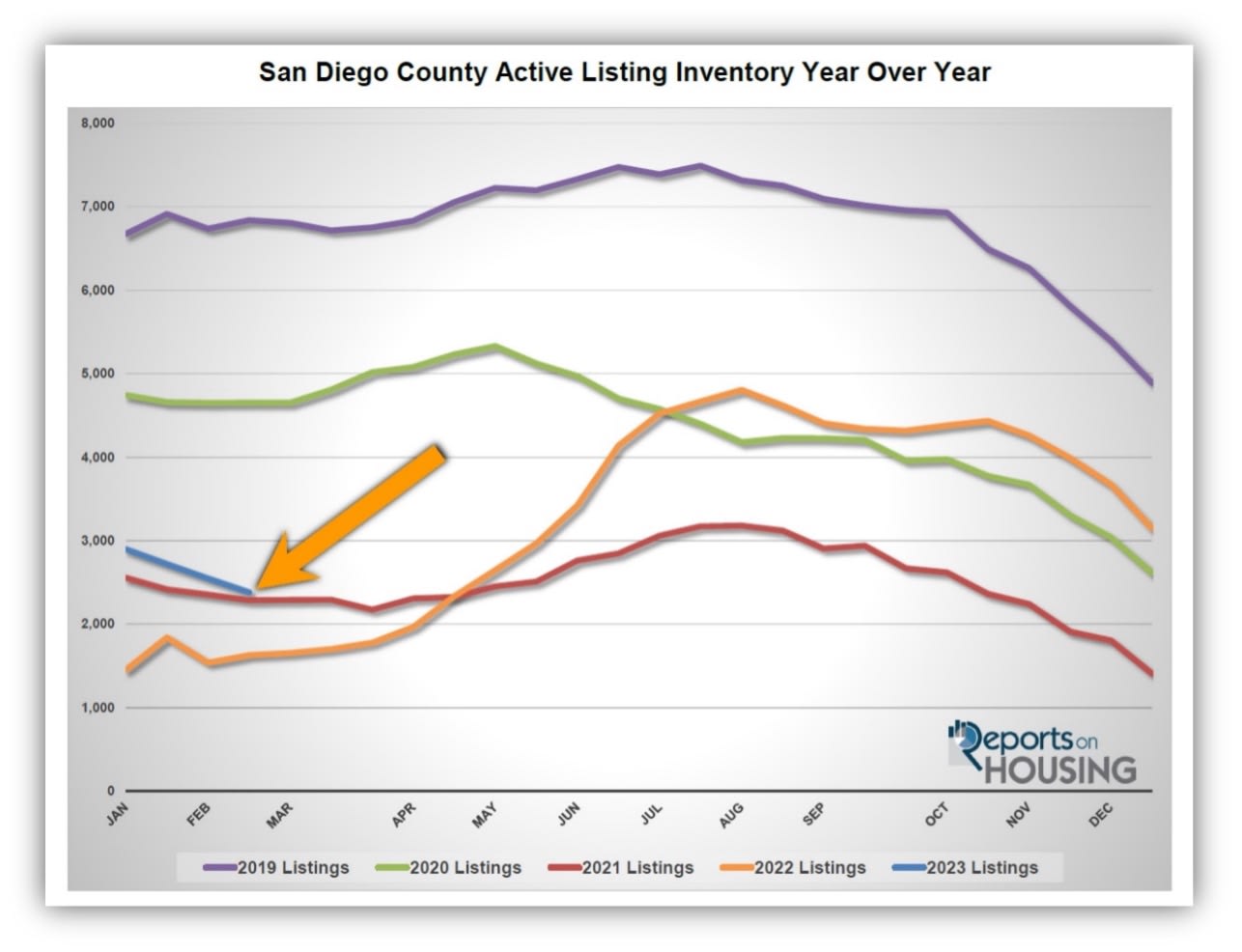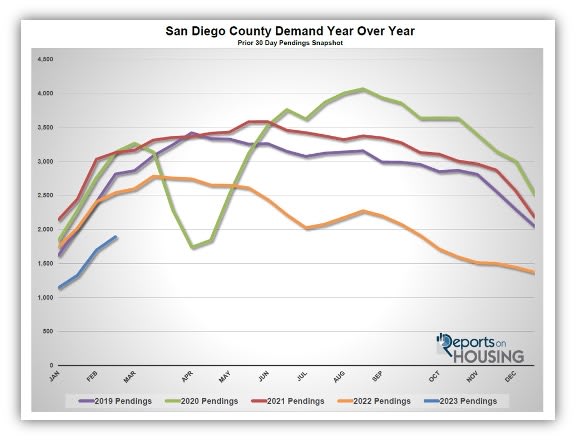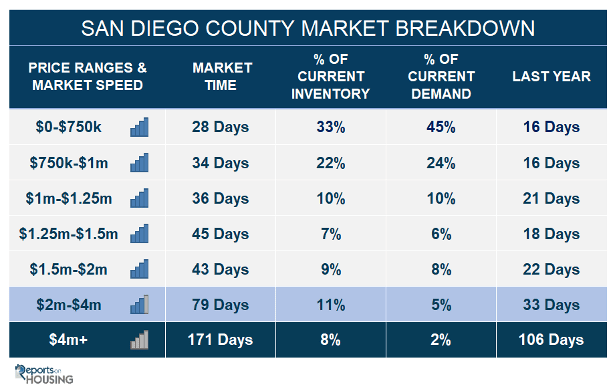Mortgage Rates
Not only do rates affect buyers, but they also impact the number of sellers.
Just about everyone loves the beach. Basking in the sun, walking along the coast, listening to the soothing sounds of waves crashing on the shore, and taking a refreshing plunge in the cool, salty water, are some of the many reasons so many head to the beach, especially on the weekend. Yet, what happens when it is overcast and cool during the winter? Not as many Southern Californians make the pilgrimage to the beach. There are still plenty of beachgoers when it is cool, from die-hard surfers in their winter wetsuits to locals taking a walk or jogging on the sand. Still, there is a definitive difference between the hot summer days and the crispy winter weather with the wind blowing and temps in the 50s. There are times when beaches seem almost deserted.
Similarly, when mortgage rates are low, the market heats up with a rise in affordability and buyer demand, along with a surge of homeowners desirous of taking advantage of a great time to make a move. Yet, when mortgage rates substantially rise as they did over the past year, demand diminishes due to affordability constraints, and many sellers opt to “hunker down” as they enjoy their underlying, locked-in, low fixed-rate mortgages.
The pandemic was an enormous disruptor, and housing benefited profoundly due to the involvement of the Federal Reserve and the Federal Government. The Fed brought the Federal Funds Rate to zero and bought trillions of dollars of both mortgage-backed securities and treasuries. Mortgage rates dropped to record low levels, instigating tremendous housing demand. The Federal Government passed stimulus packages that sent checks directly to United States citizens. Bank accounts swelled and enabled many buyers to achieve their dream of homeownership. Mortgage rates remained at unbelievably low levels, and housing benefited with a nearly instantaneous, insanely hot market that lasted for two years, from June 2020 to May 2022. That is when the Federal Reserve stepped in and started hiking rates and reducing the number of mortgage-backed securities on their books. Mortgage rates soared, and the Fed slammed on the housing market’s brakes.
In 2022, mortgage rates started the year at about 3.25%, according to Mortgage News Daily, and surpassed 7% in both October and November. It was a constant erosion of purchasing power for buyers looking to purchase. Last year’s giant jump in rates had a significant impact on affordability. For example, buyers desirous of a $4,000 monthly principal and interest payment with 10% down started the year looking at a $1,021,111 home. By October, with rates above 7%, the same buyer was looking at a $665,000 home.
Understandably, rising rates sideline many buyers. Yet, since November, mortgage rates have remained below 7% with duration, inviting many buyers to begin their search for a home again. They averaged 6.3% in December, 6.2% in January, and 6.5% thus far in February. Recently, a series of positive economic reports, which is not helpful in the Fed’s inflation fight, has resulted in rising rates, reaching 6.87% today.
Nonetheless, as the economy eventually slows, mortgage rates are anticipated to fall. As they fall, affordability will improve, and demand will rise. In looking at that same desired $4,000 monthly payment, a drop from 7% to 6% allows a buyer to increase their search from a $667,778 home to one at $741,111. Rates could reach 5.5% in the summer if inflation falls and the economy cools, which would allow that buyer to broaden their search to $782,222. As rates drop, affordability improves, allowing more purchasers to enter the housing arena.
Higher rates sideline many sellers as well. Some homeowners would like to move but choose to “hunker down” and stay put instead. Their current underlying low, fixed-rate mortgage is preventing them from selling. Since 89% of all California homeowners with a mortgage have a rate at or below 5%, and 71% have a rate at or below 4%, the higher rate environment limits the number of sellers coming on the market. In San Diego County in 2022, there were 25% fewer sellers, 13,200 missing FOR-SALE signs due to the hunkering downtrend. In January, there were 45% fewer sellers, or 1,375 missing signs. That is a big chunk of the housing market. As rates drop, the gap between a homeowner’s underlying rate decreases. When rates eventually drop below 5.5%, that gap will narrow enough to entice many homeowners to sell, and fewer homeowners will continue to hunker down.
The missing sellers have resulted in a falling inventory despite lower demand levels. Demand, the last month of pending sales activity, is at 1,894, readings last seen during the April 2020 lockdowns of the pandemic. Yet, there are only 2,382 homes available today, an anemic reading well off the 3-year pre-pandemic average for mid-February (2017 to 2019) of 5,469 homes, more than double where it stands today. As a result, the market feels exceptionally hot even with higher rates with an Expected Market Time, the time between listing and successfully negotiating a contract to sell, of only 38 days. The 3-year pre-COVID average was 55 days. Today’s hotter market is a function of the low supply and fewer homeowners coming to market, not record-breaking demand.
Mortgage rates pave the path for housing. Substantially higher rates have been limiting supply and demand, constraining the number of closed sales. As rates drop, demand rises, more homeowners opt to sell, and more closed sales will occur.
Active Listings
The active inventory continued to fall, declining by another 6% in the past couple of weeks.
The active listing inventory decreased by 165 homes in the past couple of weeks, down 6%, and now sits at 2,382 homes, its lowest level since April last year. The inventory typically climbs slowly in February. The 3-year pre-COVID average (2017 to 2019) was a 1% rise. The inventory is following the post-pandemic trend in 2021 of a declining inventory to start the year. Surging demand is only slightly to blame for the decreasing supply. Instead, the lack of homes coming on the market is the main culprit for the anemic supply. In January, 2,204 new sellers came on the market in San Diego County, 2,134 fewer than the 3-year average before COVID (2017 to 2019), 49% less. These missing sellers are preventing the inventory from meaningfully growing. In March, as housing transitions into the Spring Market, more sellers will come on the market, but it will be muted as homeowners continue to “hunker down,” unwilling to move due to their current underlying, low fixed-rate mortgage.
Last year, the inventory was 1,629, 32% lower, or 753 fewer. The 3-year average before COVID (2017 through 2019) is 5,469, an additional 3,087 homes, or 130% extra, more than double today.
Demand
Demand soared by 12% in the past couple of weeks.
A snapshot of the number of new escrows over the prior month, demand, increased from 1,698 to 1,894 in the past couple of weeks, adding 196 pending sales, up 12%. It is at its highest level since September of last year. The higher mortgage rate environment has taken a bite out of demand. According to Mortgage News Daily, rates were at 5.99% at the start of February and have risen to 6.87% today. This will further erode demand until rates ease again. Demand is also being limited by the need for more available homes to purchase. Fewer sellers listing their homes limit the number of buyers able to secure a home. Buyers cannot purchase what is not available. This is the lowest mid-February reading since tracking began a decade ago. Expect demand to grow a bit more from here until it peaks sometime between March and mid-May.
Last year, demand was at 2,541, 34% more than today, or an extra 647. The 3-year average before COVID (2017 to 2019) was 3,052 pending sales, 61% more than today, or an additional 1,158.
With demand surging higher and the supply falling, the Expected Market Time (the number of days to sell all San Diego County listings at the current buying pace) decreased from 45 to 39 days in the past couple of weeks, an insane pace for housing and its lowest level since May 2022. Last year the Expected Market Time was 19 days, substantially faster than today, and home values were screaming higher. The 3-year average before COVID was 55 days, a slower pace than today.
Luxury End
The luxury market continued to improve over the past couple of weeks.
In the past couple of weeks, the luxury inventory of homes priced above $1.5 million decreased from 683 to 662 homes, down 21 homes or 3%. Luxury demand increased by 62 pending sales, up 29%, and now sits at 278, its highest level since July 2022. With demand surging higher and the supply falling, the overall Expected Market Time for luxury homes priced above $1.5 million decreased from 95 to 71 days, its highest level since last June. The San Diego luxury market is the hottest in all of SoCal. At 71 days, it may not be as hot as most of 2021 and the first half of 2022, but it is a ferocious pace.
Year over year, luxury demand is down by 48 pending sales or 15%, and the active luxury listing inventory is up by 248 homes or 60%. Last year’s Expected Market Time was 38 days, an insane velocity for luxury.
For homes priced between $1.5 million and $2 million, the Expected Market Time in the past two weeks decreased from 56 to 43 days. For homes priced between $2 million and $4 million, the Expected Market Time decreased from 113 to 79 days. For homes priced above $4 million, the Expected Market Time decreased from 249 to 171 days. At 171 days, a seller would be looking at placing their home into escrow around August 2023.
Copyright 2023- Steven Thomas, Reports On Housing - All Rights Reserved. This report may not be reproduced in whole or part without express written permission from the author.




